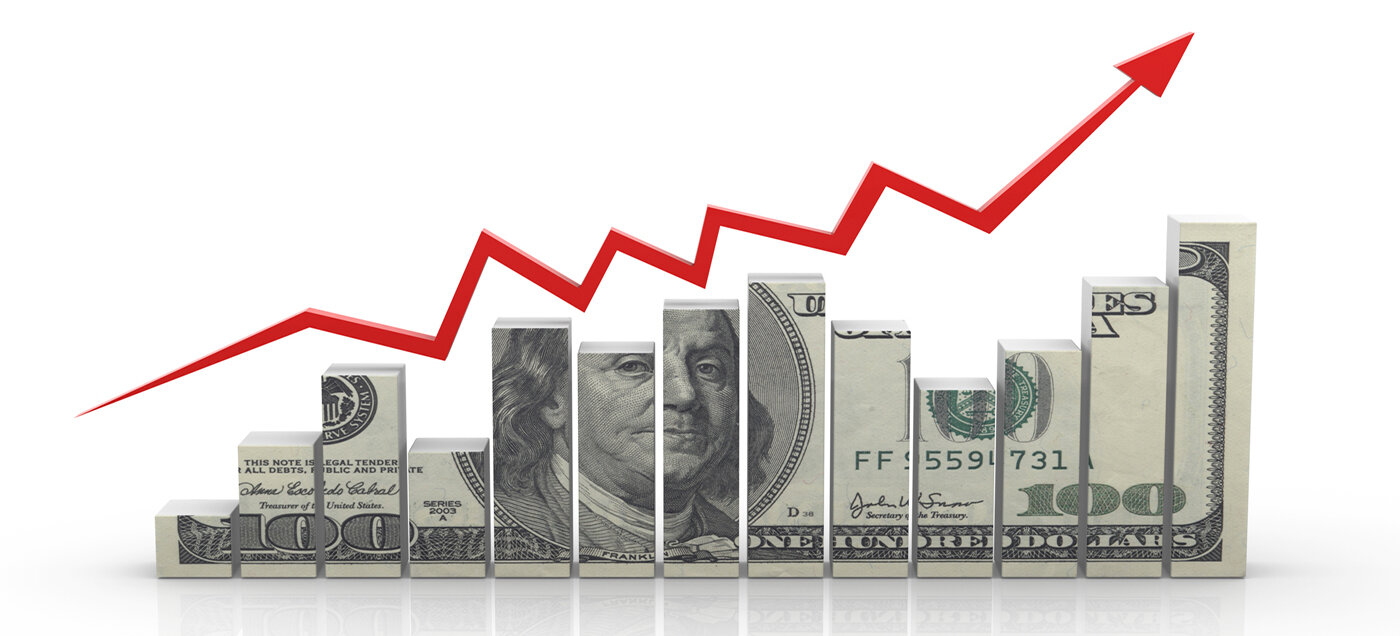Residential Real Estate News

Homes Still Enjoyed Price Gains in 90 Percent of U.S. in Q4
Residential News » Washington D.C. Edition | By Michael Gerrity | February 13, 2023 9:02 AM ET
According to the National Association of Realtors latest quarterly report, approximately nine out of 10 U.S. metro markets registered home price gains in the fourth quarter of 2022 despite mortgage rates eclipsing 7 percent. Eighteen percent of the 186 tracked metro areas registered double-digit price increases over the same time period, down from 46% in the third quarter of 2022.
Compared to a year ago, the national median single-family existing-home price rose 4.0% to $378,700. Year-over-year price appreciation decelerated when compared to the previous quarter's 8.6%.

"A slowdown in home prices is underway and welcomed, particularly as the typical home price has risen 42% in the past three years," NAR Chief Economist Lawrence Yun said, noting these cost increases have far surpassed wage increases and consumer price inflation of 15% and 14%, respectively, since 2019. "Far fewer metro markets experienced double-digit price gains in the latest quarter."
Among the major U.S. regions, the South saw the largest share of single-family existing-home sales (45%) in the third quarter, with year-over-year price appreciation of 4.9%. Prices grew 5.3% in the Northeast, 4.0% in the Midwest, and 2.6% in the West.
"Even with a projected reduction in home sales this year, prices are expected to remain stable in the vast majority of the markets due to extremely limited supply," Yun added. "Moreover, there are signs that buyers are returning as mortgage rates decline, even with inventory levels near historic lows."
The top 10 metro areas with the largest year-over-year price increases all recorded gains of at least 14.5%, with seven of those markets in Florida and the Carolinas. Those include Farmington, N.M. (20.3%); North Port-Sarasota-Bradenton, Fla. (19.5%); Naples-Immokalee-Marco Island, Fla. (17.2%); Greensboro-High Point, N.C. (17.0%); Myrtle Beach-Conway-North Myrtle Beach, S.C.-N.C. (16.2%); Oshkosh-Neenah, WI (16.0%); Winston-Salem, N.C. (15.7%); El Paso, Texas (15.2%); Punta Gorda, Fla. (15.2%); and Deltona-Daytona Beach-Ormond Beach, Fla. (14.5%).
Half of the top 10 most expensive markets in the U.S. were in California, including San Jose-Sunnyvale-Santa Clara, Calif. ($1,577,500; -5.8%); San Francisco-Oakland-Hayward, Calif. ($1,230,000; -6.1%); Anaheim-Santa Ana-Irvine, Calif. ($1,132,000; -1.6%); Urban Honolulu, Hawaii ($1,090,200; 3.4%); San Diego-Carlsbad, Calif. ($857,000; 1.4%); Los Angeles-Long Beach-Glendale, Calif. ($829,100; -1.3%); Naples-Immokalee-Marco Island, Fla. ($802,500; 17.2%); Boulder, Colo. ($759,500; -2.0%); Seattle-Tacoma-Bellevue, Wash. ($708,900; 1.3%); and Barnstable Town, Mass. ($668,100; 4.0%).
Roughly one in 10 markets (11%; 20 of 186) experienced home price declines in the fourth quarter of 2022.
"A few markets may see double-digit price drops, especially some of the more expensive parts of the country which have also seen weaker employment and higher instances of residents moving to other areas," Yun added.
In the fourth quarter of 2022, housing affordability was exacerbated by elevated home prices and mortgage rates which roughly doubled from the beginning of the year. The monthly mortgage payment on a typical existing single-family home with a 20% down payment was $1,969. This represents a 7% increase from the third quarter of last year ($1,838) but a major surge of 58% - or $720 - from one year ago. Families typically spent 26.2% of their income on mortgage payments, up from 25% in the prior quarter and 17.5% one year ago.
Once again, first-time buyers looking to purchase a typical home during the fourth quarter of 2022 encountered challenges related to housing's growing unaffordability. For a typical starter home valued at $321,900 with a 10% down payment loan, the monthly mortgage payment rose to $1,931, about 7% more than the previous quarter ($1,806) and an increase of almost $700, or 57%, from one year ago ($1,233). First-time buyers typically spent 39.5% of their family income on mortgage payments, up from 37.8% in the previous quarter. A mortgage is considered unaffordable if the monthly payment (principal and interest) amounts to more than 25% of the family's income.
A family needed a qualifying income of at least $100,000 to afford a 10% down payment mortgage in 71 markets, up from 59 in the prior quarter. Yet, a family needed a qualifying income of less than $50,000 to afford a home in 16 markets, down from 17 in the previous quarter.
Sign Up Free | The WPJ Weekly Newsletter
Relevant real estate news.
Actionable market intelligence.
Right to your inbox every week.
Real Estate Listings Showcase
Related News Stories
Residential Real Estate Headlines
- U.S. New-Home Sales Surge in August as Mortgage Rates Ease
- Despite Increased Foreign Buyer Activity, Miami Residential Sales Dip 11 Percent in August
- California Home Sales Enjoy Modest Uptick as Mortgage Rates Ease
- U.S. Home-Flipping Profits Sink to Lowest Level Since 2008 Financial Crisis as Costs Climb
- Why the World's Rich Are Flocking to Europe in 2025
- Federal Reserve Delivers First Rate Cut of 2025 as Mortgage Relief Proves Limited
- Homebuilder Sentiment Holds Steady in U.S. as Rate-Cut Bets Lift Outlook
- U.S. Mortgage Rates Experience Sharpest Weekly Drop in Over a Year
- U.S. Foreclosures Rise for Sixth Straight Month as Affordability Pressures Mount
- Black U.S. Homeownership Rate Falls to Two-Year Low as Job Losses Mount
- Las Vegas Home Prices Flatten as Listings Surge, Sales Slow
- Cooling Miami Housing Market Sees 16 Percent Annual Sales Drop in July
- U.S. Mortgage Delinquencies Uptick in June Amid Regional Pressures
- California, Florida Top U.S. Housing Markets Most at Risk of Downturn
- 30-Year Mortgage Drops to 6.56 Percent in Late August, Lowest Since October 2024
- Investors Maintain Elevated Role in U.S. Housing Market Despite Slight Pullback
- Pending Home Sales Show Mixed Signals as U.S. Buyers Remain Cautious
- Canadian Home Sales Extend Recovery in July
- U.S. Home Sales Rise in July as Buyers Gain More Bargaining Power
- Zombie Foreclosures Edge Up Across U.S.
- 2.6 Million Homes at Wildfire Risk Across 14 Western States in 2025
- One in Five Americans Willing to Trade Personal Safety for Home Affordability
- U.S. Home Price Growth Slows as Affordability Pressures Mount in 2025
- U.S. Mortgage Rates Dip to Four Month Low in Early August
- U.S. Mortgage Applications Rise in Late July, Breaking Four-Week Slump
- Hong Kong's Housing Market Stuck in Stalemate as Bulls and Bears Face Off
- U.S. Condo Market Struggles in 2025
- U.S. Pending Home Sales Remain Sluggish in June
- Los Angeles Area Wildfires Destroyed Nearly $52 Billion in Homes Last January
- Greater Palm Beach Area Residential Sales Slip in June Amid Growing Inventory
- Economic Resilience Lifts U.S. Housing Outlook Going Forward
- New Home Sales Stagnate as Affordability Struggles Continue in America
- U.S. Housing Market Slips in June as Prices Hit New Highs
- Florida, California Continue to Reign Supreme as America's Ultraluxury Housing Markets
- Caribbean Housing Market Evolves into Global Second-Home Hotspot
- U.S. Home Sales See Highest June Cancellation Rate on Record
- Orlando Housing Market Cools in June as Listings Slide, Sales Slow
- Private Credit Surges in 2025 as Real Estate Developers Bypass Banks
- U.S. Condo Market Suffers Sharpest Price Drops in Over a Decade as Buyers Retreat
- Rising Taxes, Insurance Costs Undermine the Stability of U.S. Homeownership







